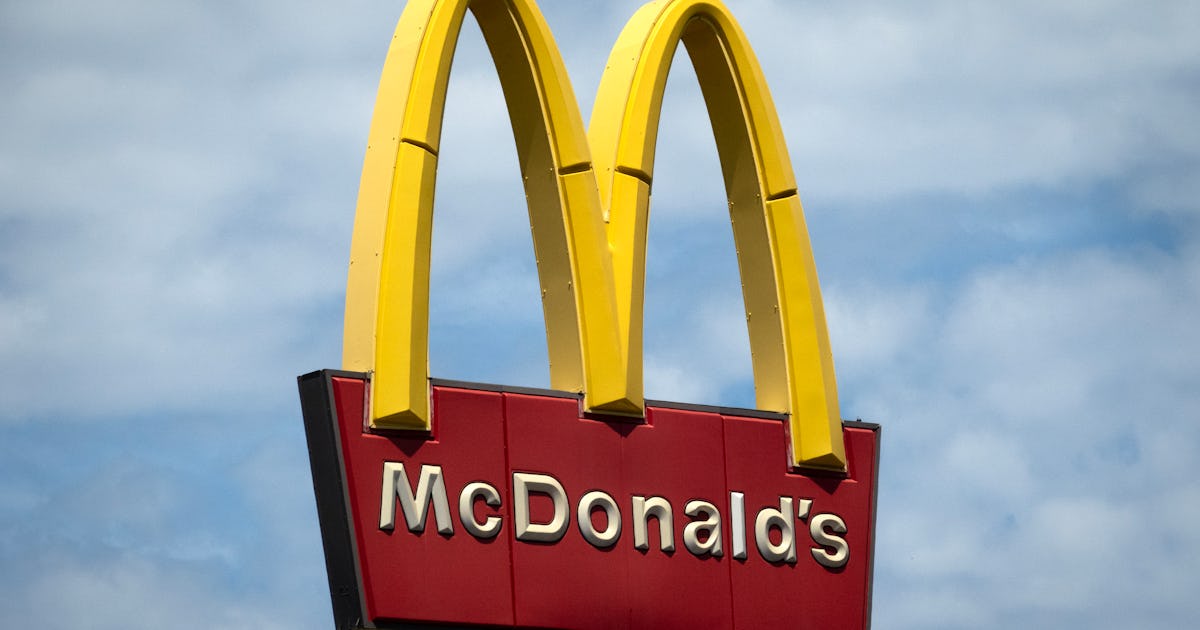In Texas, Omakase Is Performance Art
If you buy something from an Eater link, Vox Media may earn a commission. See our ethics policy.
in the national dining scene to the point that it’s become fodder for memes — “the omakase situation is spinning out of control,” a New York City Instagram account jokingly posted earlier this year.
It seems that even now, in 2025, we have not reached peak omakase. Omakase reservations still book out months in advance, and there are omakase restaurants in office buildings, hidden behind a bookcase at an indoor golf course, and tucked away in the back room of a high-end clothing boutique. In 2023, Phillip Frankland Lee, chef and co-owner of Sushi by Scratch Restaurants, told Eater, “I don’t think there’s a bigger trend in America than 10-seat speakeasy sushi.” Sushi by Scratch Restaurants now has 12 locations around the country, and the rapid-fire omakase openings aren’t showing any sign of slowing down.
It’s easy to understand the appeal of omakase, a Japanese dining form — the word means “I leave it up to you” — that puts chefs in charge of a seasonal, personalized menu for diners. Omakase, which gained popularity in Japan in the 1980s and 1990s, appears often at sushi restaurants in the United States. Still, many of the popular omakase-only restaurants dotting the country right now attract diners with the social currency of scoring a hard-to-get reservation, the intimacy of the experience, and the allure of high-quality fish. More interesting, though, is the chef’s role in an omakase dinner. Rather than working in a traditional kitchen where chefs are hidden behind doors, free to yell at servers and accidentally set things on fire, the omakase chef remains inches away from diners, facilitating conversation, slicing fish, and preparing bites under close scrutiny. But how do these chefs learn and manage the special skills unique to their craft, along with the performance art aspect of the service? Eater interviewed omakase chefs across the Lone Star State to find out.
:no_upscale()/cdn.vox-cdn.com/uploads/chorus_asset/file/25994062/OTOKO_AndrewReiner_June2023_62.jpg)
are more serious in tone and format, strictly focused on diners engaging with the flavor of the fish while being educated by the chefs. With few notable exceptions, such as Tsuke Edomae in Austin, that style is rarely found in Texas, where guests prefer to have an active role in the dinner rather than being silent consumers.
“I don’t want this to be a performance. I want this to be an experience,” says Saine Wong, chef and owner of six-seat omakase restaurant Toshokan in Austin (Wong moved to Austin to work at Sushi|Bar under Phillip Frankland Lee in 2020). Wong finds his diners fall into three categories: those who want to learn about the fish and methods, those who want to have conversations about music festivals or the city, and those who just want to eat, drink, and have fun (the New York Times calls this the bromakase crowd). “I mold to what you’re giving me as a guest,” he says. “Within 10 minutes, I’m already gauging what direction this dinner is going to go. And then I take that ball and I run with it.”
Wong says that a hidden part of his job is to stay up-to-date with current events and pop culture, such as television shows, in order to cater to the conversational crowd. “We have to be interesting in that sense,” he says. “We can’t be clueless about what’s going on in the world.” Multi-tasking is also essential. “You have to be able to hold a conversation, make eye contact, and still make sushi at the same time,” he explained.
Shannon Kennedy, the head sushi chef at Uchi and one of the few women sushi chefs in Austin, says this personal connection is a recent development in omakase service. “The interactions are meaningful. People in Austin like to have conversations with the chefs outside of just the food,” she says. “With our regulars, we usually catch up on what’s new with them, and for out-of-towners, we suggest places to go and things they can do while in town.”
Surprisingly, few Texas chefs seem to get performance anxiety behind the counter. Luis Mercado, chef and co-owner of Neo, the 13-seat omakase restaurant located in a high-end Houston boutique, says that while mistakes happen, if there’s chaos, they don’t let it show. “We’ve never really had a really bad mistake,” he says.
Omakase restaurants typically operate with a small staff, sometimes consisting of just a chef and a server. However, with such a small staff, there is little room for error when it comes to an omakase service. Frankland Lee says he hires based on personality rather than strictly on sushi experience. He tells his employees that working at his restaurants isn’t like working in a kitchen — it’s more like being in a band, and they have to put on three shows a night. “ When you sit at the bar at one of our restaurants, we feed off of your energy,” Frankland Lee says, adding that he trains his team to ask conversation-starting questions, like, “Where are you from?” or “How did you hear about us?” He tries to build camaraderie by the end of dinner.
:no_upscale()/cdn.vox-cdn.com/uploads/chorus_asset/file/25992203/Chef_Marcos_Tuna_Breakdown_Abante_Photography.JPG)
Hidden Omakase describes himself as shy: He recalls failing a service test during his training at Uchi because he stuttered so much. Although he has since gained confidence, Juarez says he relies on a set spiel at the beginning of Hidden’s service to have a sense of control. With 18 seats, Hidden is one of the larger omakases in the state, but Juarez structures his dinners into three sections, working with two other sushi chefs to ensure “everyone has … the star experience,” he says.
This is not to say there are not serious omakases, or that fun omakases are not serious, for that matter. At Neo, Mercardo says chefs don’t engage with diners as much as most would think. “We let the guests engage with us if they want to, but some guests want to be left alone and eat their food,” he says. “Part of being an omakase chef is learning how to read the room.”
Chef Michael Che of Austin’s Tsuke Edomae compares tasting menus to fingerprints. “No two are really alike,” he says, but that’s the beauty: “To have masterpieces created by people who are passionate about what they do.”
Some omakase chefs prioritize the educational element of the dining experience by explaining each dish. Juarez takes full advantage of this opportunity, often showing off whole fish before or after serving them to guests. At Neo, Mercado notes that because the team uses ingredients that some diners may not recognize, dinner requires more explanation about where they come from, how they’re prepared, and why the chefs decided to use them. Diners want to learn about more than sushi, too. Kennedy says people ask all kinds of questions during an omakase experience. “We’ve had guests ask us about our knives, how long it took to learn, and even if we cut ourselves,” she says. “We are grateful that they recognize our hard work.”
Storytelling can be a big part of a meal: During an intimate omakase, the creator tells the story directly to the guest, rather than relying on the food or server to convey the message. Wong, who keeps a map at his restaurant with pins marking the places he has visited, tells diners about how his travels have influenced his dishes, such as scallops served with a salsa verde that he learned to make from his Machu Picchu climbing guide. At Neo, the chefs explain traditional details, like why rice is served at a specific temperature or the use of imported Japanese vinegars, as well as how they draw from their Mexican heritage to incorporate ingredients like recado, a Mexican spice paste. “We didn’t train in Japan,” says Mercado. “We’ve been to Japan and we love going to Japan and we grab a lot of inspiration from that. But we’re not trying to do food that we just don’t feel connected to. We pay homage to all these techniques through the lens of our experiences.”
is having control over the playlist. Nearly every omakase chef Eater interviewed for this story mentioned the importance of music during dinner. Wong famously keeps a guitar on the wall to turn a dinner into a jam session, and several chefs, including Frankland Lee and Yoshi Okai of Austin’s Otoko, were in bands. “At one time, for me, my world was music, and I’m able to bring that same passion and thrill to omakase,” Okai says. “For me, Austin is about music. The passion and creativity found in music throughout this city are embodied at Otoko and also through my playlist.”
Juarez of Hidden Omakase says his team does “literally everything as a group,” which means collaborating on both the menu and the playlist. Instead of “boring elevator music,” they play the same artists they listen to while prepping: Kendrick Lamar, SZA, and Frank Sinatra. Otoko’s 144-hour playlist spans Townes Van Zandt, Orville Peck, and Belarusian post-punk band Molchat Doma. At Neo, Mercado and co-owner and chef Paolo Justo call their omakase service a choreography, emphasizing the importance of looking good while doing it. “It’s also about hitting all the senses, down to the music choice [and] even the textures that you’re touching with the plateware and silverware,” Mercado says.
:no_upscale()/cdn.vox-cdn.com/uploads/chorus_asset/file/25994113/Shelby_Moore___240118___Uchi___Scottsdale___240118___Uchi___Scottsdale25274.jpg)
to open an omakase restaurant. They typically don’t require gas burners or a hood system, and thus can be opened in nontraditional spaces. They can operate with a smaller staff. Omakase restaurants also allow for a degree of control that chefs can’t find in traditional kitchens. “At Uchi, we did 400 covers a night. When you hone that from 400 to 40, you can fix all the small things that you wish you could fix,” says Juarez.
As the distance closes between chef and diner, there’s more of an opportunity to build relationships. “We know [if guests] are right-handed or left-handed,” says Mercado of Neo. “We know what side of the bar they like to sit in. We even know the song choices they like. It’s pretty cool to be in a restaurant where you’re able to pay that much attention to a single guest.”
The intimacy of omakase and guest interactions benefits the chefs, who get to see feedback in real-time, something they don’t typically see at a traditional restaurant, Frankland Lee says. “When we were back in kitchens, you’d overhear the server say Table 5 complained about something. You never heard Table 5 loved it,” says Frankland Lee. “Our chefs get to create something, hand it to someone, and watch them do their little happy dance.”
However, the direct feedback can also be a double-edged sword — you can’t pretend you weren’t at the restaurant that day and blame someone else, Wong jokes. The personalization makes it difficult to scale, and Wong often feels he can’t step away to open another restaurant without disappointing people.
Omakase gives chefs a chance to return to the intimate, homey roots of what it means to have a restaurant. It’s an opportunity to be on a first-name basis with a small group of people by the end of the night. In a world that can feel fractured and anonymous, it’s no wonder the connection omakase provides is so popular. “Chefs leave it all on the line for the guests who come in each night — to pamper and to serve them,” Che says. “Who wouldn’t like that?”










:max_bytes(150000):strip_icc()/Parents-SupermanMovieTrailer-b216b7f3a5a0442f9aec56736b5a3d7b.jpg)
